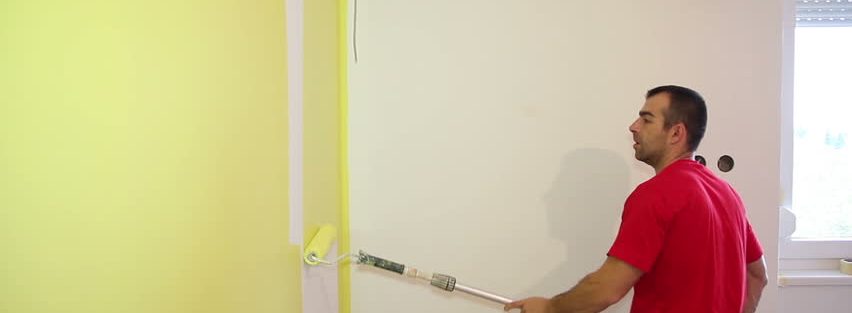1. Don’t let your paint dry out
A half-empty can of paint will dry out. Drop golf balls into the paint can to fill the air space, or place plastic wrap under the lid, seal it tightly and store the painting upside down.
2. Use the right primer
If you’re painting new drywall, use a water-based primer to hide imperfections and provide an even base before applying color. If you’re painting paneling, water-damaged, or smoke-saturated walls, opt for an oil-based primer.
3. Avoid lap marks
To avoid stripes caused by rolling over paint that’s already starting to dry, keep a wet edge by painting the full height of the wall and then moving over slightly so you can overlap the last stroke with the next.
4. Stir paint with a modified stirrer
Before you stir the paint, drill holes in the stirrer to help mix the paint more thoroughly. The holes help the paint flow through the stirrer, aerating it like a whisk and mixing the paint evenly.
5. Add texture, if you want
If you want more texture on your wall, choose a roller with a longer, ¾” nap, which holds more paint. The nap is the fabric material covering the roller, and longer naps create more stippling on your wall because of the way their fibers distribute the paint. Use a shorter-nap roller – between ¼” and ½” nap – for the smoothest finish.
6. Don’t wash your brushes or rollers
If you’re using latex paint, there’s no reason to clean your brushes or rollers if you don’t finish your project in one day. Because cold temperatures keep latex paint from drying quickly, you can simply wrap your rollers or brushes in plastic bags or tin foil and put them in the refrigerator. (Be sure to let them fully warm back up before using them.)
7. Deal with problem tape
If you’re using older tape, sometimes it can be difficult to peel off its roll without tearing or sticking. If your painter’s tape continues to peel, microwave the whole roll for 10 seconds.
8. Determine the kind of paint on existing walls
Not sure if a wall’s existing paint is oil or latex? Soak a cotton ball in rubbing alcohol and rub it in a small area across the wall. If the cotton ball has paint residue, the paint is latex. No paint on the cotton ball? You’ll be painting over an oil-based paint and will want to use an oil-based primer before painting.
9. Invest in a paint pen
Buy a paint pen that lets you load it with a small bit of your new paint color for small touchups later. These pens keep the paint inside fresh for about a year once filled; just remember to shake them well before use to ensure the paint comes out smoothly and evenly.
Source: Now from Nationwide


